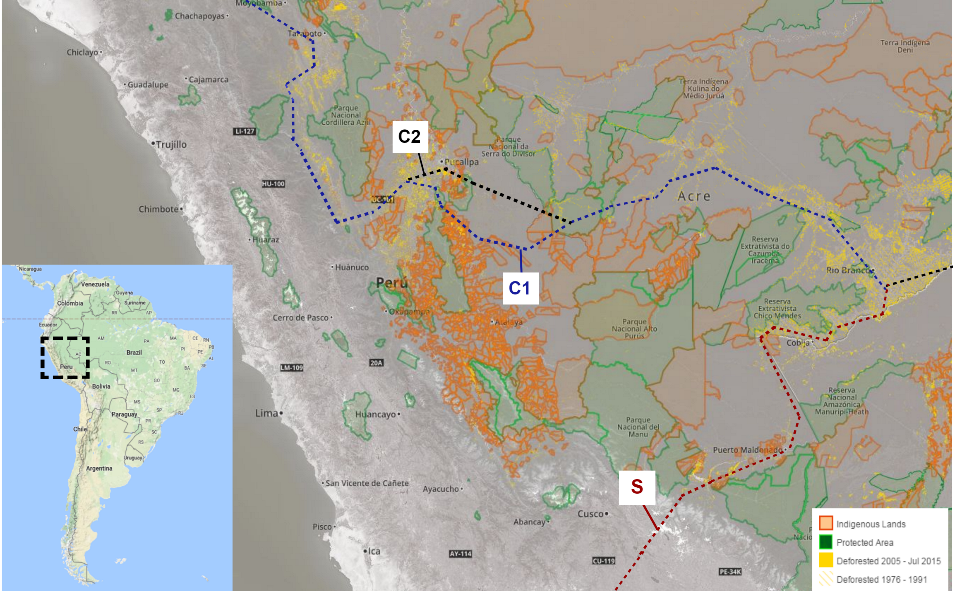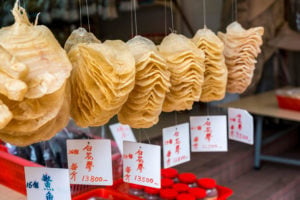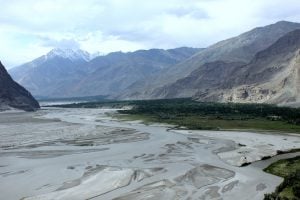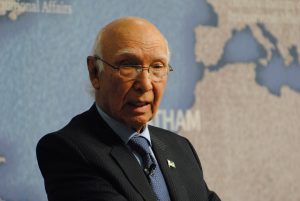Peru’s new president, Pedro Pablo Kuczynski, expressed doubts about the economic viability of a giant China-backed train line connecting the Pacific and Atlantic oceans in Beijing last week but made no comment on whether the social and environmental risks it poses could derail the project.
Kuczynski chose China as the destination for his first official overseas trip in an effort to shore up political and commercial ties. Yet the former World Bank economist baulked at the US$60 billion estimated cost of the proposed infrastructure mega-project quoted by China Railway Eryuan Engineering Corporation (CREEC), the engineering firm assessing its feasibility, saying it would expedite the export of Brazilian soya to China but needed cargo to flow both ways.
The Brazilian and Peruvian transport ministries and China’s National Development and Reform Commission signed a memorandum of understanding (MoU) agreeing to research the railway in 2014. In May 2015, Chinese premier Li Keqiang, Dilma Rousseff, the impeached former president of Brazil, and Peru’s ex-leader Ollanta Humala signed another MoU to proceed with viability studies for the 5,000-kilomtere track. The final results of these studies were expected in May this year but have not yet been released.
Kuczynski is now saying that the project – which would have to negotiate complex topography and bisect ecologically-sensitive areas and indigenous communal territories in the Peruvian and Brazilian Amazon – needs further consideration. In doing so, he adds his voice to those of Peru’s ministries of culture and the environment (under the previous administration) and Valec, Brazil’s state-run rail operator, which have expressed concerns about the railway.
A step backwards
According to Paulina Garzón of the China-Latin America Sustainable Investment Initiative at American University, Kuczynski’s comments signal a “step backwards” for the railway’s progress.
“He [Kuczynski] doesn’t seem very enthusiastic about it,” Garzón told Diálogo Chino, adding that the president’s declaration that the Peruvians would now reassess the project’s financial costs and benefits conflicted with the MoU, which states that economic feasibility would be undertaken by CREEC.
CREEC has yet to make public the final part of the feasibility studies but initial assessments suggested three possible routes through the remote Peru-Brazil borderlands – all of which would either impact nature reserves of indigenous communities.

Brazil’s state-run rail operator Valec criticised CREEC’s studies for skating over these issues. But the environmental feasibility of the project remains the responsibility of relevant national ministries, CREEC told the Brazilian senate in June.
More trade
On his China trip, which he labelled a ‘successful mission’, Kuczynski announced that Peru would apply for membership to the new China-led Asian Infrastructure Investment Bank, which was set up to finance big infrastructure projects. He also stressed that Peru must find new industrial sectors in China to export its mining products to in the face of slowdowns.
“The main export market has been the construction sector, which has slowed,” Kuczynski said, but noted that China’s growing automotive sector could provide new opportunities.
Shortly after winning a dramatic run-off in June, the president-elect highlighted Peru’s resource-based economy and trade relationship with China, saying the country would need to work specifically with those who buy significant amounts of it exports.
Garzón said it is equally important for China that mining prospers in Peru, since Chinese finance accounts for 30% of the total investment in the sector. If the sector were to shrink, it would affect Chinese companies operating within it.
However, many Peruvians are concerned about the environmental and social consequences of dependence on the extractive industries and have called for stronger standards as a means of calming ongoing social conflicts.
Speaking to Diálogo Chino in June, Tania Pariona, a congresswoman from the opposition Frente Amplio – which backed Kuczynski in the second round of elections as a tactic to keep the polarising Keiko Fujimori out of office – said the country needs to make a realistic projection of its investments taking the limits of the environment and local communities into account.
“What future is there for economic growth if human development is not taken into consideration?” she said.







